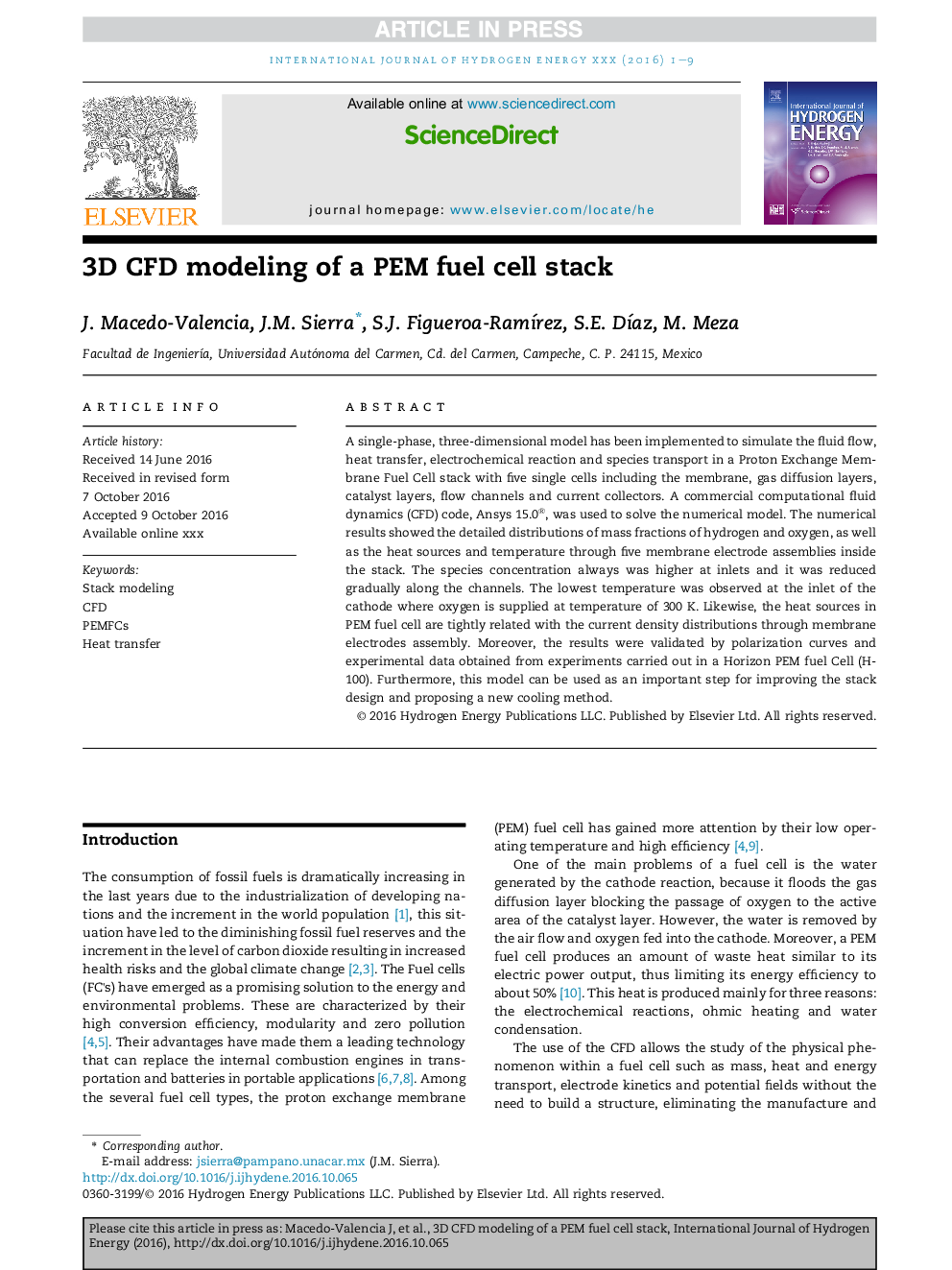| Article ID | Journal | Published Year | Pages | File Type |
|---|---|---|---|---|
| 5145869 | International Journal of Hydrogen Energy | 2016 | 9 Pages |
Abstract
A single-phase, three-dimensional model has been implemented to simulate the fluid flow, heat transfer, electrochemical reaction and species transport in a Proton Exchange Membrane Fuel Cell stack with five single cells including the membrane, gas diffusion layers, catalyst layers, flow channels and current collectors. A commercial computational fluid dynamics (CFD) code, Ansys 15.0®, was used to solve the numerical model. The numerical results showed the detailed distributions of mass fractions of hydrogen and oxygen, as well as the heat sources and temperature through five membrane electrode assemblies inside the stack. The species concentration always was higher at inlets and it was reduced gradually along the channels. The lowest temperature was observed at the inlet of the cathode where oxygen is supplied at temperature of 300Â K. Likewise, the heat sources in PEM fuel cell are tightly related with the current density distributions through membrane electrodes assembly. Moreover, the results were validated by polarization curves and experimental data obtained from experiments carried out in a Horizon PEM fuel Cell (H-100). Furthermore, this model can be used as an important step for improving the stack design and proposing a new cooling method.
Keywords
Related Topics
Physical Sciences and Engineering
Chemistry
Electrochemistry
Authors
J. Macedo-Valencia, J.M. Sierra, S.J. Figueroa-RamÃrez, S.E. DÃaz, M. Meza,
